WW1 memorials in Morriston’s chapels
As the ‘Welsh Memorials’ project has gathered information about WW1 memorials from all over Wales, it has become clear that different parts of Wales can have different patterns of memorialisation. One clear generalisation is that industrial Wales had a greater number and variety of WW1 memorials than rural Wales. Although there are plenty of interesting exceptions, as a rule the WW1 memorials in rural Wales are thinner on the ground and have fewer names commemorated on them – which is obviously related to the sparser population in these areas.
Within industrial or urban Wales, there are also some interesting patterns: some areas where memorialisation was more intense than others. (Of course, one factor to bear in mind is the survival rate of memorials may not be uniform, and there are some parts of Wales where it appears that more have been lost than have survived). This article will focus in on Morriston, north Swansea, an area which had a very strong concentration of Nonconformist chapels in 1914.
 The map above gives an idea of the distribution of these chapels (using the data of the Royal Commission on the Ancient and Historic Monuments of Wales). Some of these chapels have closed down, while others have merged, but a fair number of their memorials are still extant.
The map above gives an idea of the distribution of these chapels (using the data of the Royal Commission on the Ancient and Historic Monuments of Wales). Some of these chapels have closed down, while others have merged, but a fair number of their memorials are still extant.
As a result of there being so many chapels in one locality, there was an element of rivalry between them, and we can see that expressed during the period 1914-18 in terms of the question of how many recruits had joined from each congregation. Each institution sought to show that it was ‘doing its bit’ for the war effort, and so publicised the number of their young men who had joined the Armed Forces. For example, a newspaper report in 1916 declared that ‘Carmel Church is not one of the largest in Morriston, but has the good record of having 36 of its members and adherents with the Colours’ (Herald of Wales, 22 January 1916, p.8).
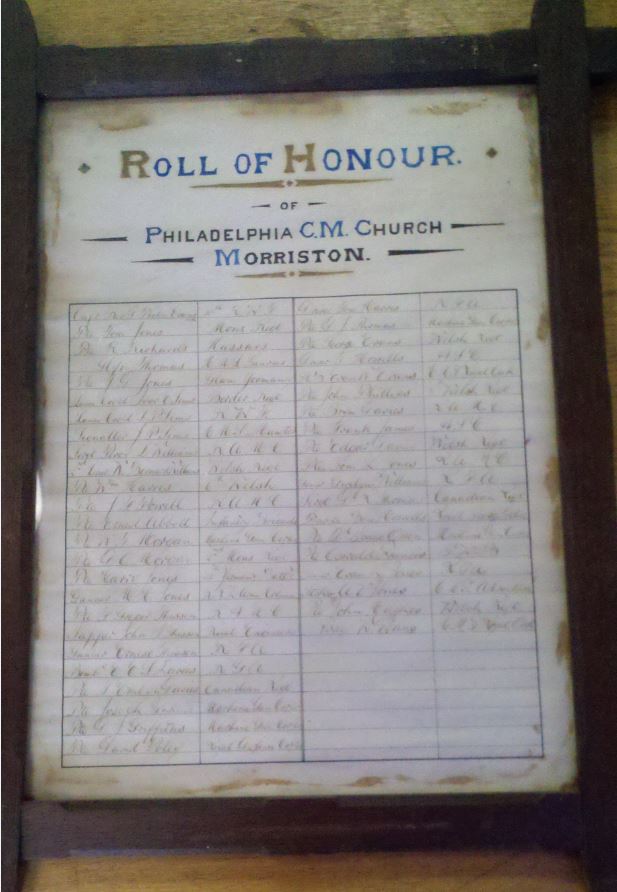
Here is an example of a contemporary Roll of Honour that was kept by Philadephia (Calvinistic Methodist) chapel, Morriston. It is likely that most local chapels had Rolls of Honour similar to this one on display as the war was being fought.
However, most of these have not survived, as they were superseded by more ornate memorials commissioned at the end of the war.
One thing that is clear from looking at the memorials below is that one local artist designed a number of them. W.J.James, of Penrhiwforgan, Morriston, designed all of the ones below: clockwise from the top-left – Soar; Carmel; Tabernacl; Tabernacl, Cwmrhydyceirw and Seion. In each of these designs there is an image of the chapel building in the middle towards the top, flanked by the Union flag and the Welsh dragon.
The design of the memorial of Tabernacl (on Woodfield Street – renowned as one of the most grandiose of all the chapels in Wales) is particularly interesting. It has the motto of the Welsh Regiment, “Better death than dishonour” in four languages (English, Welsh, French and Flemish) and ten militaristic pictures, including images of machine gunners and tanks.
As well as the Roll of Honour, Tabernacl (Baptist) Cwmrhydyceirw has a tablet commemorating the two men from the chapel who died.
Bethania (Calvinistic Methodist) does not have a Roll of Honour – although the Annual Report for 1919 does give details of the 55 men from the chapel who served in the war. It has, on one side of the pulpit, a marble memorial to the 10 men from the chapel who died. It also has, on the other side, a similar memorial to the 5 men who were killed in the Second World War, as sad testimony to the fact that the Great War was not, after all, ‘the war to end wars’.
g.h.matthews February 5th, 2018
Posted In: Uncategorized
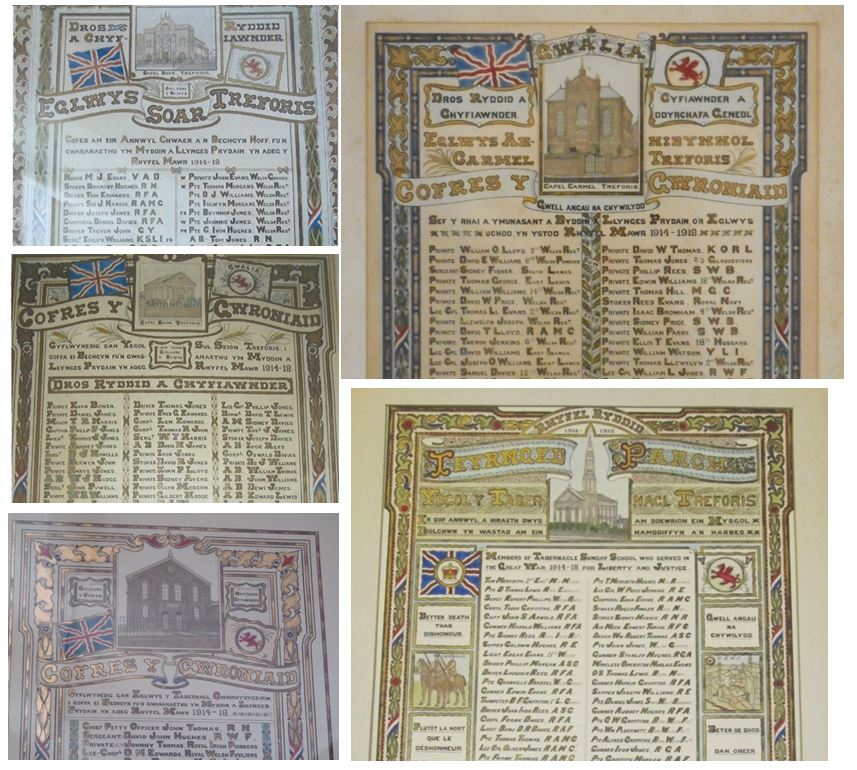
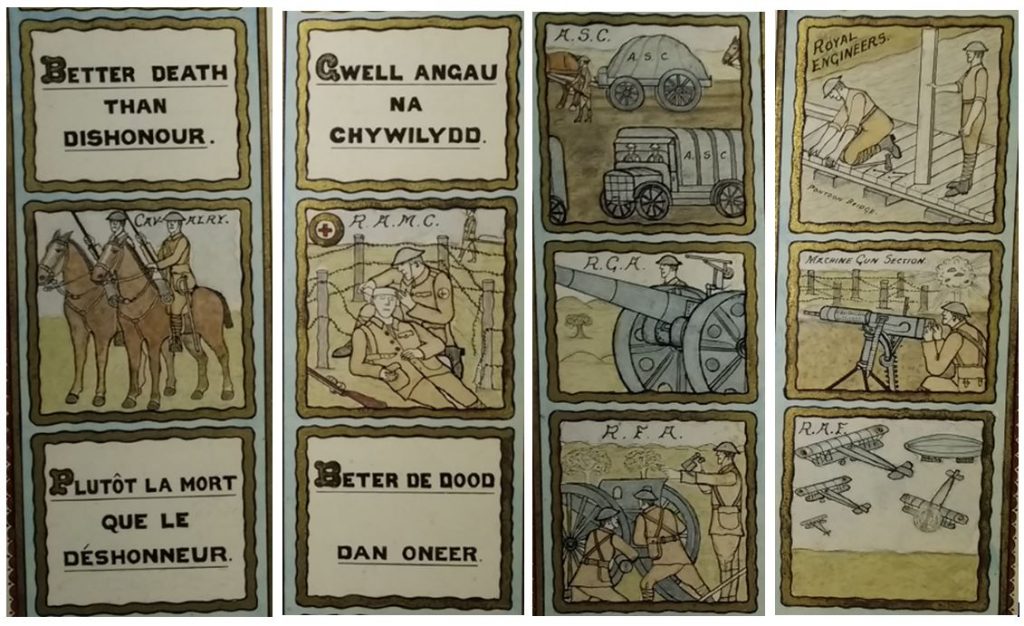
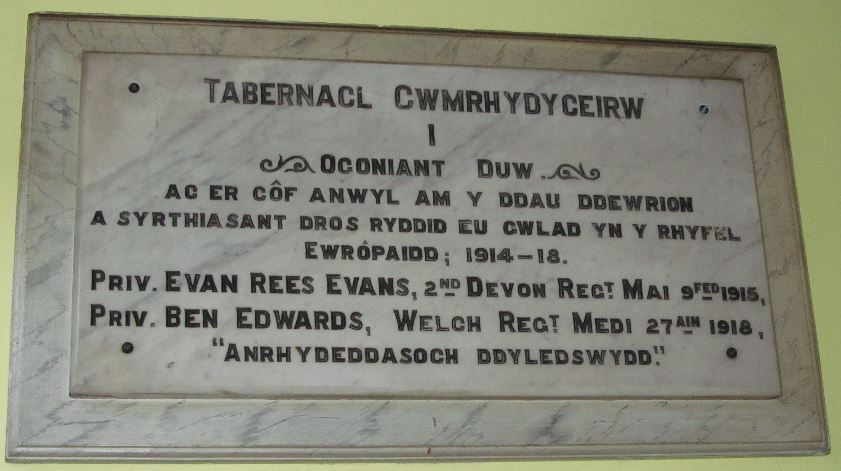
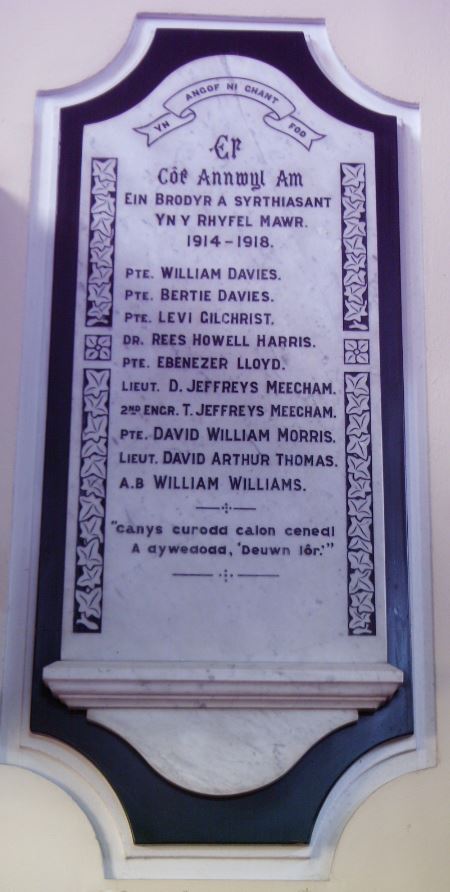
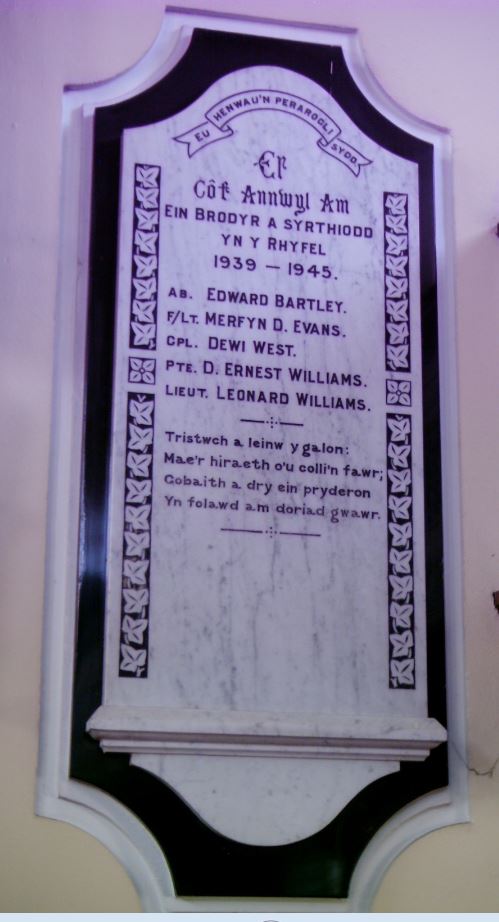
Excellent Work